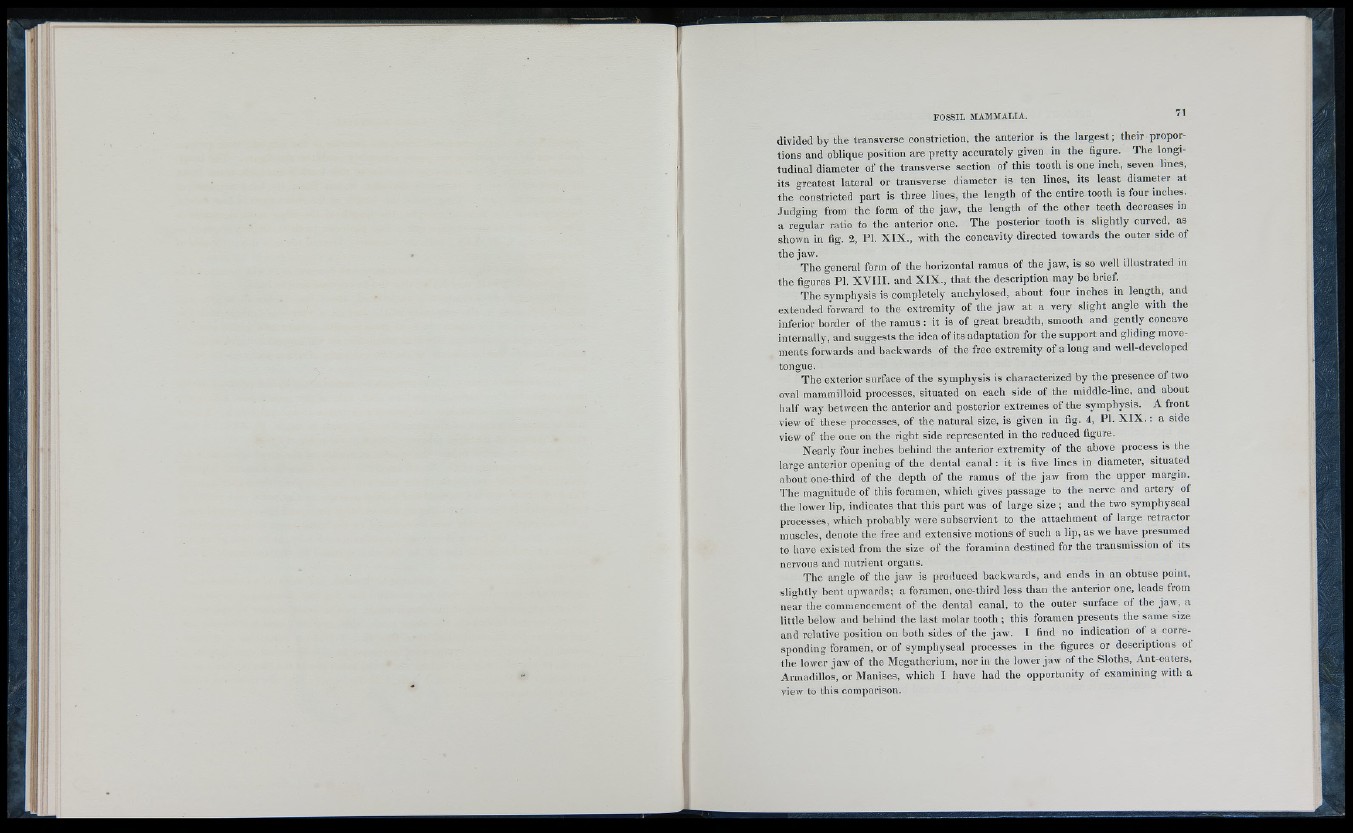
divided by the transverse constriction, the anterior is the la r g e s t; their proportions
and oblique position are pretty accurately given in the figure. The lon g itudinal
diameter o f the transverse section o f this tooth is one inch, seven lines,
its greatest lateral or transverse diameter is ten lines, its lea st diameter at
the constricted part is three lines, the length o f the entire tooth is four inches.
Judging from the form o f the jaw, the length o f the other teeth decreases in
a regular ratio fo the anterior one. Tlie posterior tooth is sligh tly curved, as
shown in fig. 2 , PI. X IX ., with the concavity directed towards the outer side o f
the jaAv.
The general form o f the horizontal ramus o f the jaw, is so well illustrated m
the figures PI. X V I I I . and X IX ., that the description may be brief.
The symphysis is completely anchylosed, about four inches in length, and
extended forward to the extremity o f the jaw at a very slight angle with the
inferior border o f the ramus : it is o f great breadth, smooth and gently concave
internally, and sugge sts the idea o f its adaptation for the support and gliding movements
forwards and backwards o f the free extremity o f a long and well-developed
tongue.
The exterior surface o f the symphysis is characterized by the presence of two
oval mammilloid processes, situated on each side o f the middle-line, and about
ha lf way between the anterior and posterior extremes o f the symphysis. A front
view o f these processes, o f the natural size, is given in fig. 4, PI. X I X . : a side
view o f the one on the right side represented in the reduced figure.
Nearly four inches behind the anterior extremity o f the above process is the
large anterior opening o f the dental canal : it is five lines in diameter, situated
about one-third o f the depth o f the ramus o f the jaw from the upper margin.
The magnitude o f this foramen, which gives pa ssa g e to the nerve and artery ot
the lower lip, indicates that th is part was o f large size ; and the two symphyseal
processes, which probably were subservient to the attachment o f large retractor
muscles, denote the free and extensive motions o f such a lip, as we have presumed
to have existed from the size o f the foramina destined for the transmission o f its
neiwous and nutrient organs.
The angle o f the jaw is i>roduced backwards, and ends in an obtuse point,
sliglitly bent upwards; a foramen, one-third le ss than the anterior one, leads from
near the commencement o f the dental canal, to the outer surface o f the jaw, a
little below and behind the last molar to o tli; this foramen presents the same size
and relative position on both sides o f the jaw. I find no indication o f a corresponding
foramen, or of symphyseal processes in the figures or descriptions ot
the lower jaw o f the Megatherium, nor in the lower jaw of the Sloths, Ant-eaters,
Armadillos, or Manises, which I have had the opportunity o f examining with a
view to this comparison.